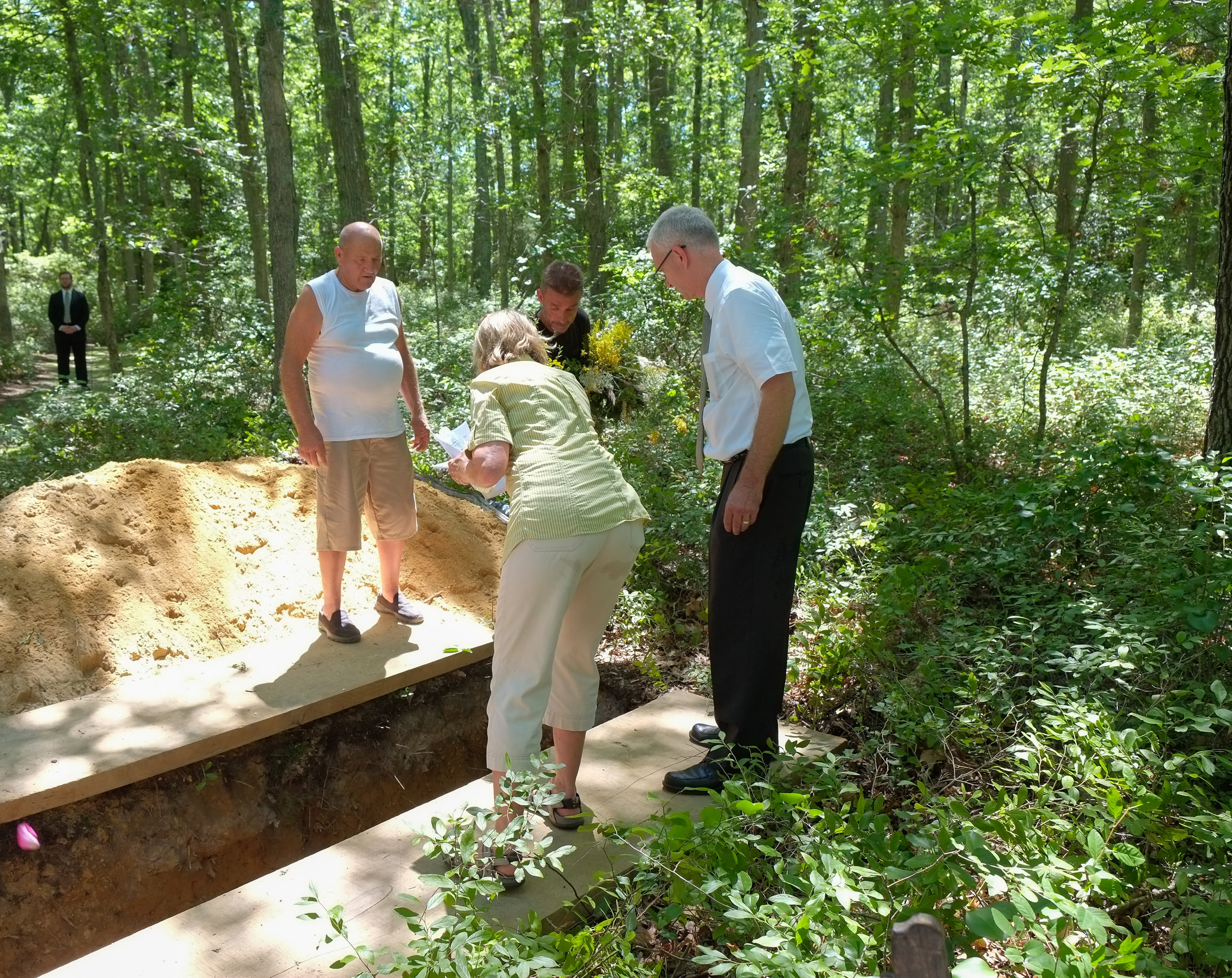My family is not great at memorialization. I can't point to a historically wonderful headstone marking our presence in this country, even though all branches that led to me arrived before the 20th century. We don't have a family cemetery plot. Anyone who died in the last thirty years was cremated and their ashes scattered. As Palmer's poem hints, graves are where ancestors mix and markers help the living find the dead.
When my father died last year we buried him at Steelmantown Cemetery in south Jersey because it's a natural burial ground and also because family members live nearby, which meant something as I'm 2 1/2 hours away. Like most such cemeteries Steelmantown limits individual grave markers to natural field stones, regulates engraving and oversees placement. For reasons having to do with the scattered nature of my family we haven't gotten around to finalizing a stone, though we did pick one out from the piles that Ed saves from digging in the cemetery. I thought the memorial would be important, but the shear emotional content of my father's burial looms so large that I don't miss the marker.
I would however be very upset if the position of the grave were lost because Steelmantown is a forest and much as I want my father to become part of the landscape, I also want his death to be individually known. The fact that my recent relatives were all scattered to the winds at death leaves a hole--I have no place to visit them.
Doing away with polished headstones is a big part of green burial. It both adds an alternative to the impersonal grassy cemeteries of conventional burial and fits in with the concept of burial as part of a natural landscape. But we shouldn't lose sight of the importance humans place on memorialization. On being remembered. Bob Prout, funeral director and green burial advocate, once told me that beyond the first generation of mourners very few graves are visited, yet we need to heed the sensitivities of families. Like me.
As the green burial concept expands and more cemeteries come on line, the option becomes local. Now if you want green burial your choices will be limited by location. You should still be sure to think about and accept consciously a cemetery's grave marker policy. Burial grounds in sensitive ecological areas and ones that are creating a new landscape often opt to prohibit human traffic once the body is committed to the earth, and provide instead for group memorialization on a wall or scattered boulders. Others like Steelmantown allow engraved fieldstones that match the geology of the area. All define and record graves so their locations don't get lost as the landscape is restored.
The absence of grand grave memorials can be be shown in a positive light. Their lack should not be viewed as a negative.




